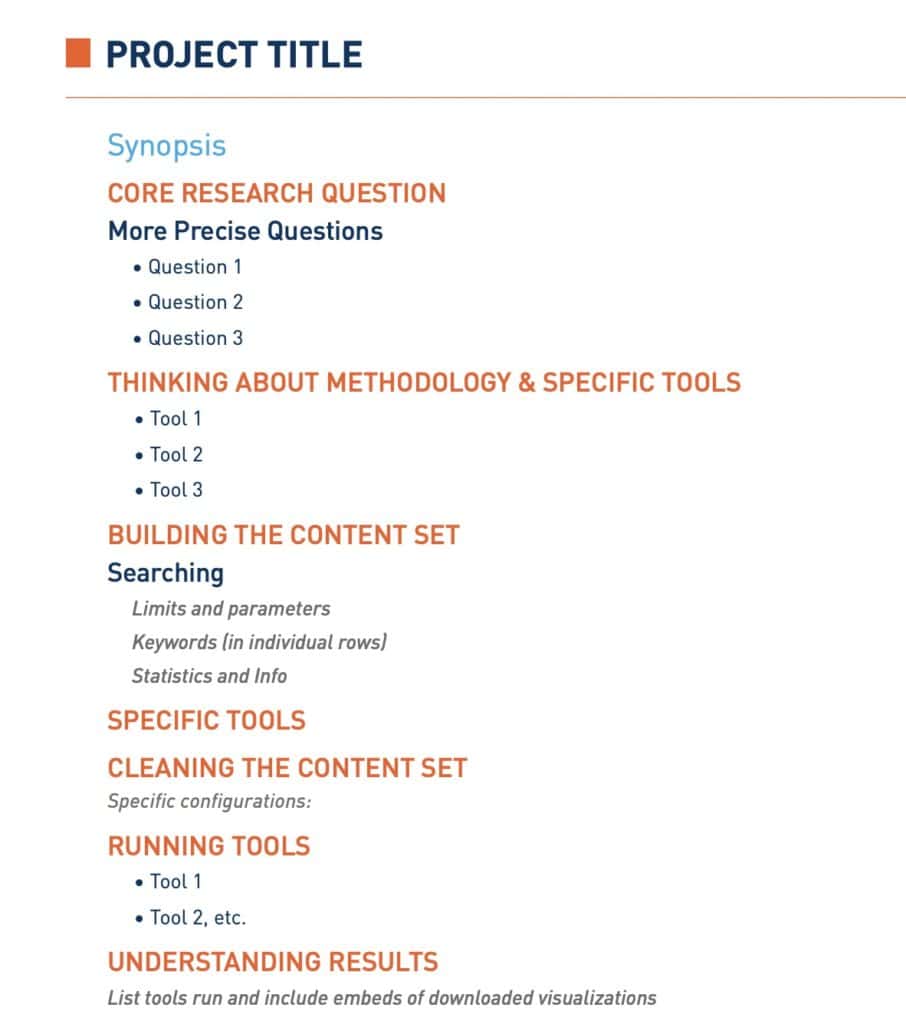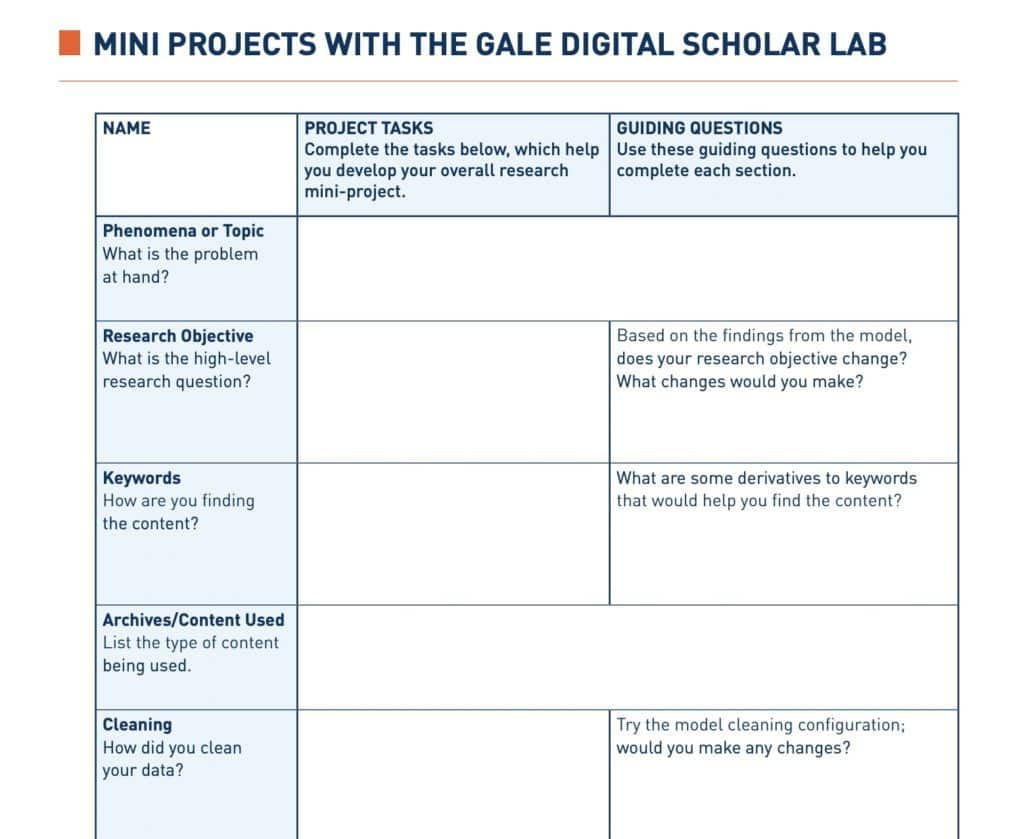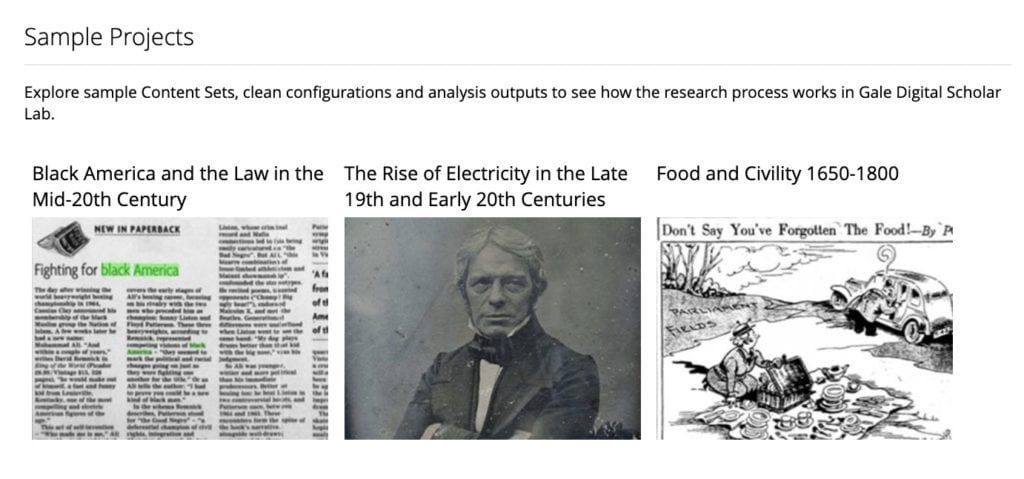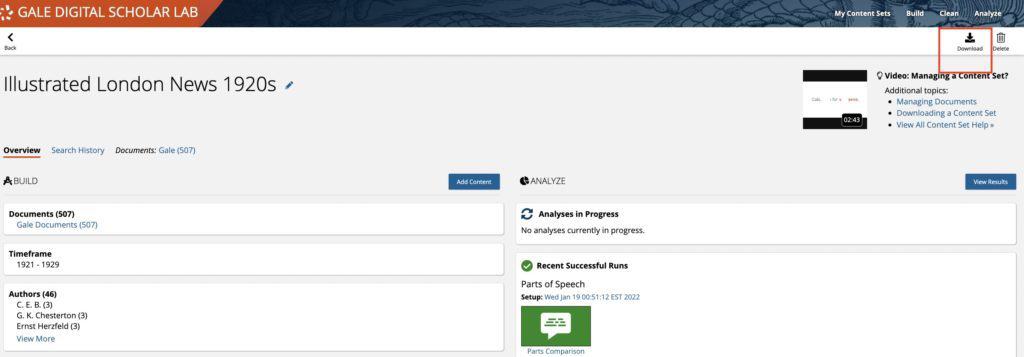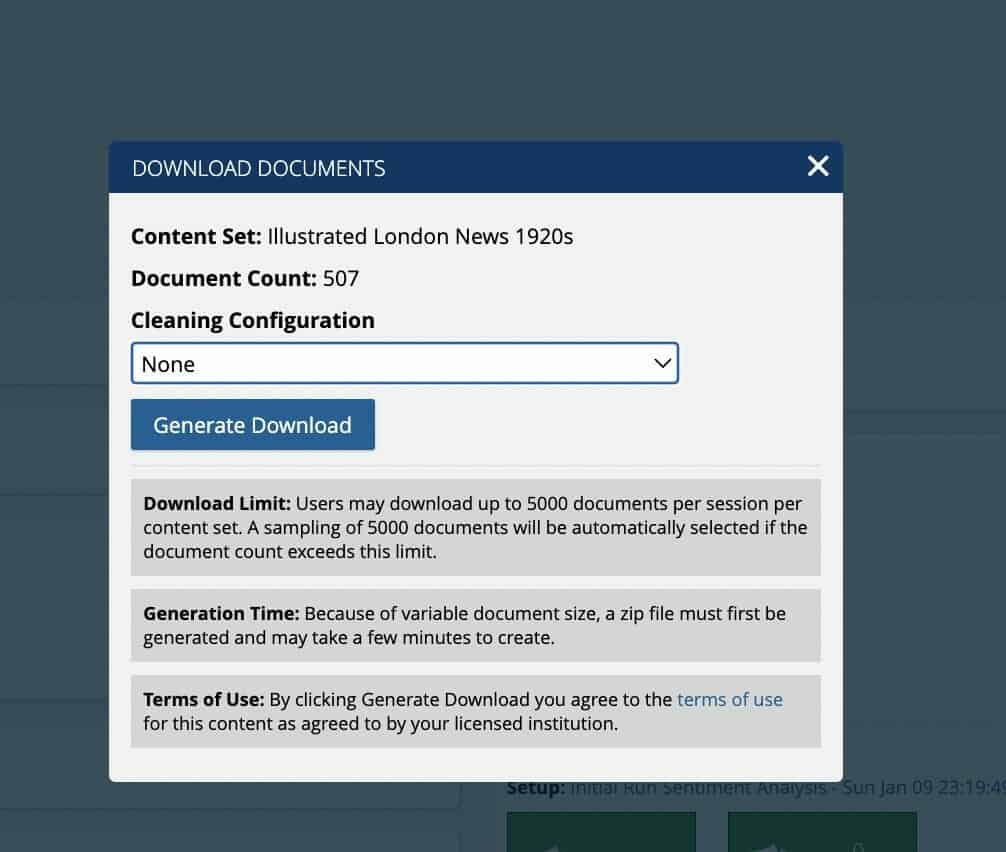│By Sarah L. Ketchley, Senior Digital Humanities Specialist, Gale│
One of the most significant shifts that has been taking place in humanities research in recent years is the movement towards team-based projects and public scholarship, in contrast to more traditional models of individual scholarship that favour print publication. The teams that form to engage in digital scholarship are often interdisciplinary, reflecting the diverse skillsets needed to create and publish digital research. A digital scholarship team may comprise disciplinary scholars, computer programmers, data scientists, specialists in informatics and design, and could be made up of faculty, staff, students, and consultants. Similarly, the digital humanities classroom offers students the opportunity to learn the skills required to successfully participate in team-based projects. This blog post suggests ways to incorporate project-based activities in the class using Gale Digital Scholar Lab.
What is Project-Based Learning (PBL)?

In a nutshell, PBL can be described as “learning by doing”. In the classroom this means the emphasis will be on teamwork, problem solving and hands-on engagement with the research topic. PBLWorks offers this comprehensive definition:
“Project Based Learning is a teaching method in which students gain knowledge and skills by working for an extended period of time to investigate and respond to an authentic, engaging, and complex question, problem, or challenge.”
Incorporating PBL into a classroom bolsters student engagement, motivates students to learn, and provides the rich contextualization of content whether you are teaching in a face-to-face learning environment or online.
Working with digitized historical primary source archives in combination with digital humanities methodologies, via a cloud-based platform like Gale Digital Scholar Lab, enables students to develop unique projects related to historical events, themes or topics that are still relevant today.
Practicalities when designing the PBL classroom
There are several practicalities to consider in designing the PBL classroom for student success. Scaffolding the learning experience is an important first step, using a variety of lessons, tools, and instructional strategies to provide routes for all students to reach project goals. The Gale Digital Scholar Lab provides embedded instructional information, ranging from video tutorials and written material to follow-along sample projects. Similarly, there are multiple, clear pathways to navigate the platform which are accessible from each stage of the project-building process. Contextual help documentation is provided at each step of the way.
Providing questions with the appropriate level of challenge for students to explore in their teams is another important consideration. Many of the Gale Primary Sources archives include unique Learning Centers providing students with the background information and guiding questions to consider as they begin building digital projects in the Lab. Learning Center content and structure is aligned with the ACRL and SAA’s Guidelines for Primary Source Literacy.
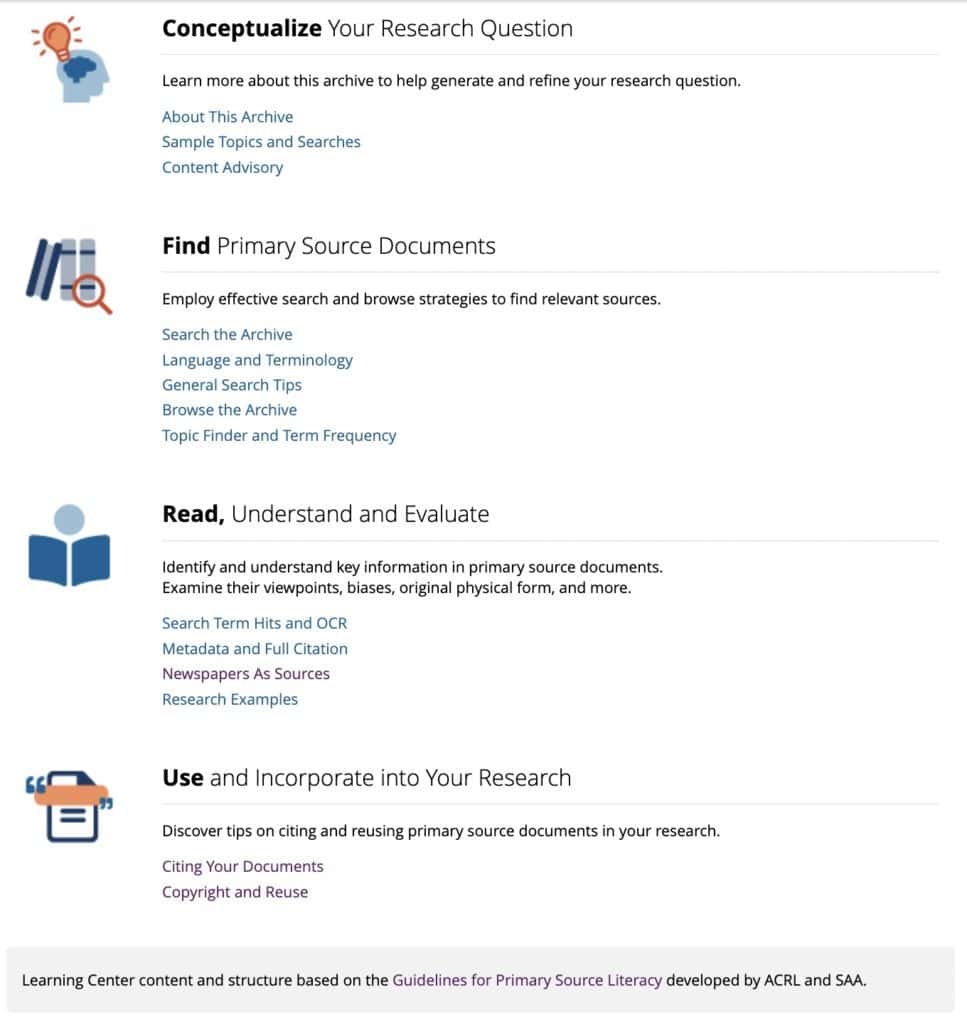
This open-ended approach framed with robust methodology provides students with autonomy and choice as they develop their research project. These are pathways for successful student engagement and project outcomes.
Student Resources for Teamwork
Gale Digital Scholar Lab provides several resources within the platform which are ideally suited for managing the workflow of team-based projects. An important note: at present the platform does not support multiple logins to a single workspace for collaboration. Each user signs into their own workspace. A simple workaround is for instructors to create Gmail accounts for each team in class, then share the login credentials with team members, so that the groups can work in the same account. This has the advantage of enabling the instructor to log into team accounts and look at student work in progress in the Lab.
Getting started:
- End-to-end project outline: this downloadable resource provides a framework that can be used to scaffold student work with primary sources and the Lab. Students can collaborate on each aspect of the project or assign specific project tasks to individual team members.
- Mini project outline: this downloadable resource is a more detailed framework for project building. It is open-ended to encourage students to explore primary sources and work process.
- Sample Projects: The Lab provides three full projects for students to explore and use as a model for their project work. These include guiding research questions, discussions of methodology, tool use, cleaning configurations and outcomes. Each project also has a downloadable “Critical Thinking Supplement” to enrich student experience.
Staying organized:
One challenge which is not to be underestimated is the issue of staying organized while working in a collaborative digital space. The Lab has several features to provide structure and context for data and research outputs.
- My Content Sets: saves all the content sets created by a user or team (logging into the same account). Students can organize work into folders, and merge, duplicate or delete content sets.
- Content Set Notes: students can add contextual notes to each content set, perhaps describing the research question, or adding a student name so that the team knows who is responsible for the work.
- Clean Configuration Notes: it’s important to document the decisions made while creating a clean configuration, and the Lab provides a notes field for students to use for this purpose.
- Clean and Analyze Run Names: each tool run or clean configuration must be named, and a simple way to keep track of this stage of the workflow is for student teams to agree on a format for titles, which can be as detailed as necessary.
Sharing project work:
The Lab provides various ways for students to export data and analysis results, which can then be shared with the class, added to a digital exhibit or embedded in a written submission.
- Exporting individual primary sources with citations
- Exporting OCR content sets and/or metadata
- Exporting visualizations and/or tabular data
Instructor Resources
Resources available in the Lab providing support and inspiration for designing PBL syllabi include:
- Sample syllabi and sample learning outcomes, discussed in Part I of this Practical Pedagogy blog post.
- A range of Case Studies describing research and teaching with the Lab.
- Gale expertise: our dedicated DH team includes faculty and can advise you on incorporating PBL and digital tools in your curriculum. Team contact details are at the end of this post.
Examples of a series of PBL projects built using the Lab alongside open-source tools is available on the University of Washington’s Open Scholarship Commons website, including student worklogs and observations about their process of working and learning.
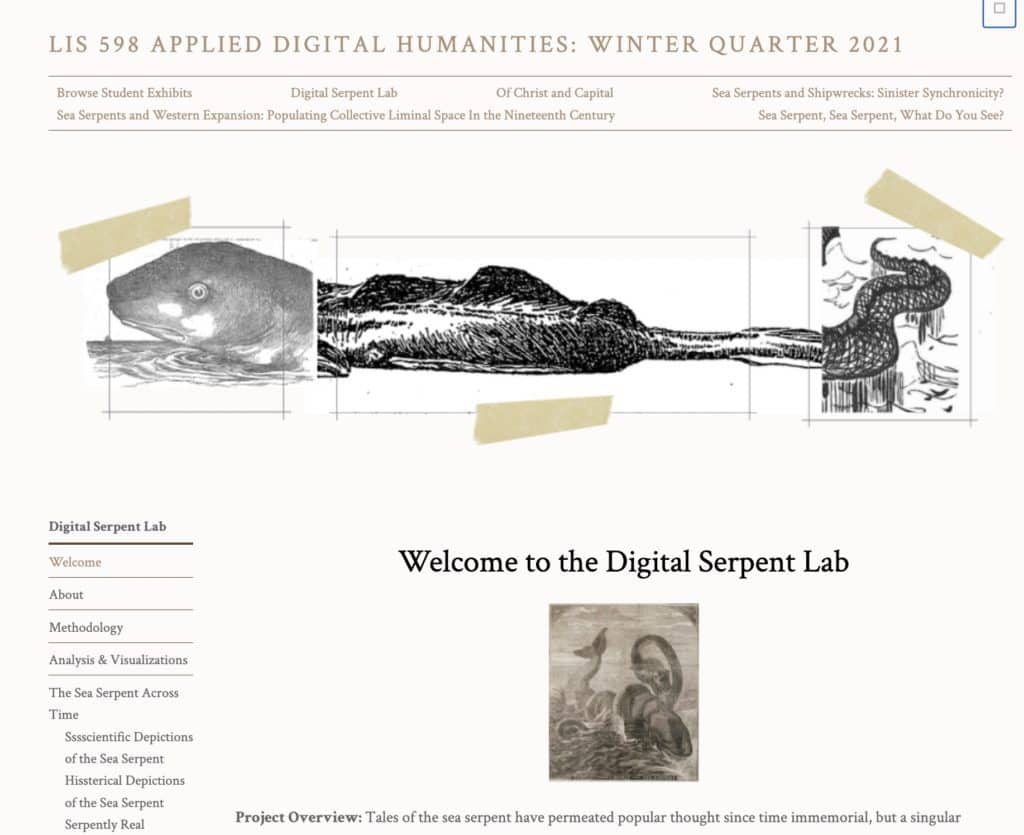
Outcomes
Engaging in classroom activities to create digital projects helps students develop real-world skills which are transferrable to the job market. Working with historical primary sources and Gale Digital Scholar Lab promotes the development of digital and research literacy, critical thinking, and creativity. Learning best practices for teamwork promotes collaborative working practices and clear communication, while project-based learning provides a foundation for using project management skills.
And finally, presenting the results of work to an online audience provides students with the opportunity to engage in public scholarship with tangible outcomes in the form of a digital project.
Any questions?
You can email the Gale Digital Scholar Lab team at [email protected] with all your Lab-related questions. We look forward to supporting your research and pedagogical work with the platform.
If you enjoyed reading about Practical Pedagogy with Gale Digital Scholar Lab, try the first post in this blog post series: Practical Pedagogy with Gale Digital Scholar Lab, Part I: Developing Your Syllabus and Learning Objectives
You may also like:
- Using the Gale Digital Scholar Lab in the Classroom
- How the Gale Digital Scholar Lab made digital humanities less daunting
- New Learning center added to the Gale Digital Scholar Lab
- New Experience for Gale Digital Scholar Lab
- Students at the University of Helsinki use the Gale Digital Scholar Lab
- Lifting the lid on how we created the Gale Digital Scholar Lab


